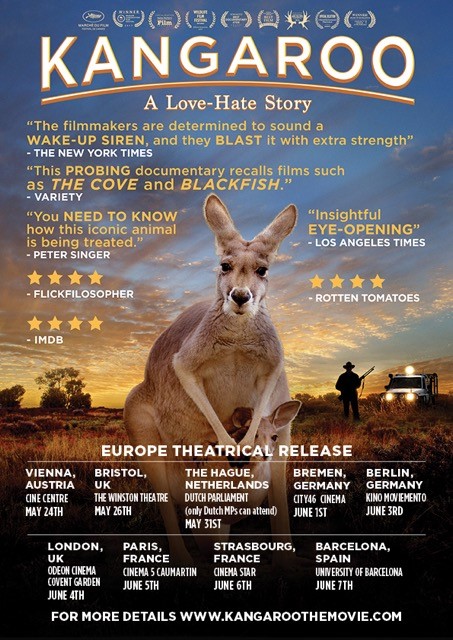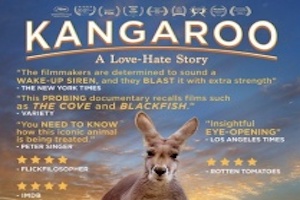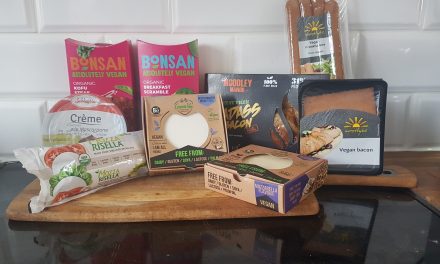“Kangaroos May Be an Aussie Icon, but They’re Being Shot and Sold for Food and Profit.”
 Kangaroos are one of the most recognisable icons in the world, right up there with the Eiffel Tower and the Statue of Liberty. The kangaroo is an image that defines Australia to the world. The kangaroo graces Australia’s national coat of arms, flies through the skies with the national airline Qantas and is deeply intertwined in Australia’s corporate, sport and cultural identity. Yet despite a common perception that they are plentiful to the point of pestilence, most Australians have little idea about the kangaroo story and what is at risk.
Kangaroos are one of the most recognisable icons in the world, right up there with the Eiffel Tower and the Statue of Liberty. The kangaroo is an image that defines Australia to the world. The kangaroo graces Australia’s national coat of arms, flies through the skies with the national airline Qantas and is deeply intertwined in Australia’s corporate, sport and cultural identity. Yet despite a common perception that they are plentiful to the point of pestilence, most Australians have little idea about the kangaroo story and what is at risk.
KANGAROO, a new ground breaking film, captures the untold story of this love hate relationship that Australia has with its most famous national icon. Set in distinctive Australian landscapes, KANGAROO explores the complex and conflicting opinions around this unique animal that is at the centre of the largest mass destruction of wildlife in the world.
The kangaroos are unique mammals that have been adapted to life in Australia for millions of years. They are most famous for their magnificent hopping and their pouch in which they carry their joeys.
We set out to make a film that celebrated this magnificent animal however we soon discovered that the kangaroo was at the heart of a bitter, complex and divided situation in Australia. We were shocked to learn that millions of kangaroos are shot each year as so-called pests and sold for profit. It surprised us that Australians who are so immensely proud to hold up the kangaroo as their beloved national symbol would sanction their nightly killing.
To find out where it started and why it still happens today, we needed to investigate the origins of an industry and government partnership, which has resulted in the largest wildlife slaughter in the world. Where had the ideology come from that a native animal that has lived in Australia for millions of years could be a national problem? How and when did Australians start believing kangaroos were a pest and therefore must be eliminated?
To make ‘KANGAROO A Love Hate Story’ we travelled thousands of kilometers across the magnificent red dusty Australian outback speaking with indigenous Australians, scientists, commercial shooters, farmers, politicians, artists, wildlife carers, chefs and activists. We uncovered many people who have a strong emotional connection to Kangaroos alongside different opinions on the “management” of kangaroos.
When Australia was colonised by white settlers over 250 years ago the kangaroos were killed as meat for eating but as sheep and cattle herds grew over the next 100 years, many people stopped eating kangaroo, however they were still frequently killed for sport. It didn’t take long before the white settlers began to see kangaroos as competing with their stock for feed, and damaging their crops. Later when ecosystems collapsed from over-stocking of introduced livestock the farmers blamed the kangaroos and believed they needed to be removed from the landscape. This idea that kangaroos are seen as a pest has continued through until the present day.
In filming KANGAROO we found that over time that the killing of kangaroos as so called pests had been replaced by killing millions of kangaroos for profit. The killing is government sanctioned and the shooting is done in the dead of night often miles from anywhere. Although codes of practice have been developed for farmers and shooters to reduce cruelty. We found that in many cases this is impossible to police, and research has found that non-compliance is widespread. While filming we came across many first hand eyewitness accounts of the brutal treatment of kangaroos and their young joeys.
For the KANGAROO movie we visited one of the kangaroo slaughterhouses that process six semi trailer loads of kangaroos every day for pet food, gourmet meats and leather. The sheer size and growth of this commercial use of wildlife was certainly surprising. Most Australians have no idea of the numbers of kangaroos killed each year and how many are exported. We were surprised to learn that America was the second largest importer of kangaroo parts (after Europe). While filming we discovered that with the growth of the commercial kangaroo industry, road kills, so-called pest mitigation and recreational shooting, there is still very little data available of the number of kangaroo deaths that occur daily. Some scientists and conservationists are reporting both local and regional extinctions.
With breath taking footage of kangaroos in the wild, this film will give the audience an up close experience of this unique species and bring to the table a conversation that Australians seem reluctant to have; the future of the largest remaining marsupial species left on the planet. It is timely that people across the world know what is going on with this internationally celebrated icon and ask the question why no-one is responding to what is happening?
Click here for details of the London Premiere – look forward to seeing you there!
Find us at:
Kangaroo website for US screenings: http://kangaroothemovie.com
Kangaroo Facebook: https://www.facebook.com/kangaroothemovie/
Kangaroo Twitter: https://twitter.com/KangarooMovie Handle: @KangarooMovie
Kangaroo Instagram: https://www.instagram.com/Kangaroo_The_Movie/
#kangaroothemovie
#Icareaboutkangaroos
By Kate McIntyre Clere, Mick McIntyre
Co-Directors: KANGAROO A Love-Hate Story





